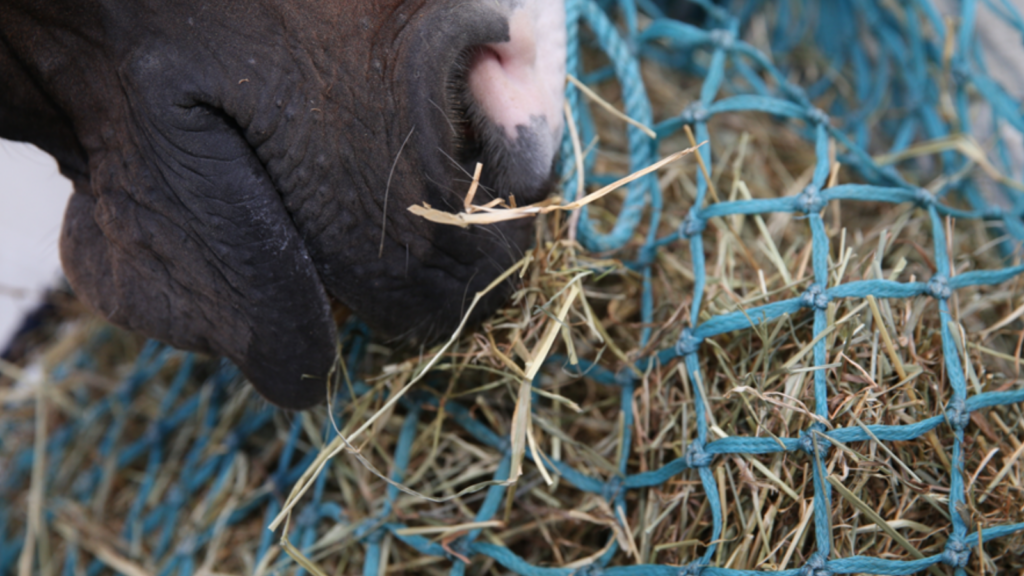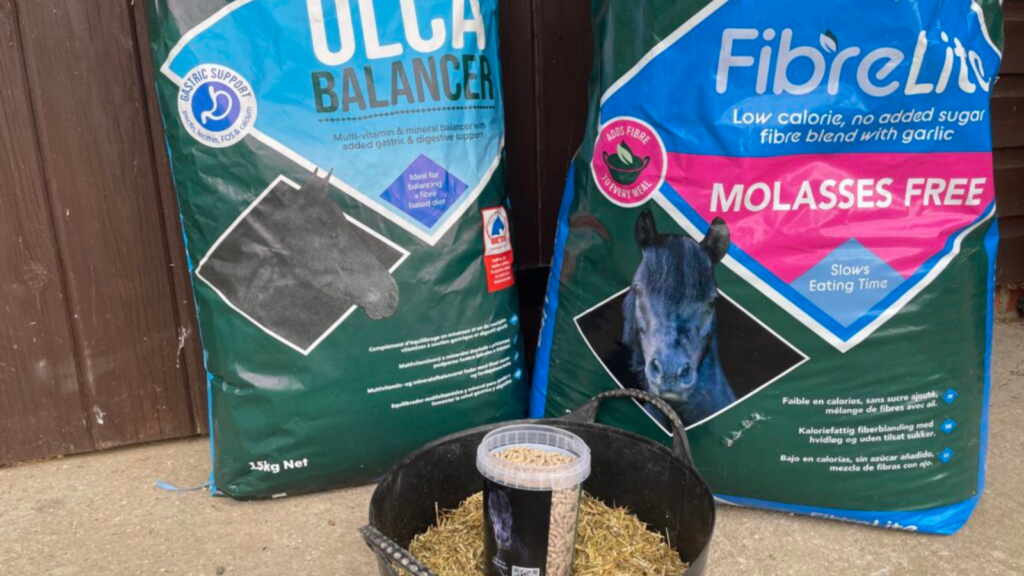Feeding the good doer prone to gastric ulcers
In theory at least, the secret to weight loss is simple – burn more calories than you consume. The reality of putting theory into practice for our horses (and ourselves!) can be challenging and, in most cases, will require some level of forage restriction. However maximising forage intake is key to supporting gastric health which leaves many owners concerned about how they can tackle an expanding waistline whilst also managing the risk of gastric ulcers. If your horse is prone to gastric ulcers and needs to slim down the following tips might help…
1. Feed at least 1.5% of current bodyweight (dry matter) as forage per day. On average, this equates to approximately 9kg of hay (11kg if you intend to soak it – see tip 2) or 11-12kg haylage (fresh weight) for a 500kg horse without grazing. If you don’t know how much your horse weighs or they have access to grazing, counting droppings may be a more practical way of monitoring intake. Initially we recommend aiming to reduce the number of droppings by a third if trying to encourage weight loss but never by more than half.
2. Consider feeding soaked hay. Soaking hay helps to reduce the sugar content and of course, less sugar means fewer calories! Due to the loss of nutrients (and therefore dry matter) into the water, each haynet will contain less ‘hay’ and more water post soaking. If soaking your hay for 1 hour or more, increase the amount of hay you soak by approximately 20% to compensate (unless feeding ad lib) – this will help you to ensure you don’t restrict forage intake too severely.
3. Divide restricted rations of hay/ haylage into as many smaller servings as possible to help avoid long periods without forage. In one study, periods of more than 6 hours without forage significantly increased the risk of non-glandular ulcers.
4. Try feeding hay/ haylage in double-netted, small-holed haylage nets to help extend eating time. In one study, feeding hay in a single, small holed haylage net increased eating time by 5 minutes per kilo – this would add 30 minutes per night if feeding 6kg hay. However, another study found that feeding 6kg of hay in 3, double-layered, small-holed haylage nets could extend eating time by 2 hours per night vs feeding the same amount of hay in a single net.
5. If possible, consider turning out at night – water soluble carbohydrate or ‘sugar’ levels may be lower overnight and dividing hay/ haylage into multiple small servings may be easier during the day!
6. Consider replacing up to 30% of your horse’s forage ration with straw – for some horses this can be a good way of diluting the calorie content and may mean that total forage intake does not need to be restricted so significantly.
7. Avoid turning out with horses that need ad-lib hay/ haylage. Even in winter months, some horses living out 24/7 may not need any additional hay or haylage!
8. Consider using a grazing muzzle, track systems or strip grazing. Grazing muzzles have been shown to reduce grass intake by approximately 80% regardless of the season – yes this means they can be used in winter months too provided the grass is long enough to be accessed through the base of the muzzle!
9. Add a low-calorie, short chopped fibre/ chaff such as Fibre Lite Molasses Free to meals to help extend eating time and increase saliva production. Ideally choose a fibre containing alfalfa as the high protein and calcium content is thought to help buffer stomach acid.
10. Feeding short chopped fibre (ideally containing alfalfa) prior to exercise helps to prevent gastric splashing. This may be particularly beneficial in horses without access to ad-lib forage.
11. Don’t forget to provide a balanced diet! Balancers are the ideal way provide vitamins, minerals and additional protein without excess calories.
For more information please speak to any one of our Windmill Feeds team at Cross in Hand, Uckfield or Crowborough.

